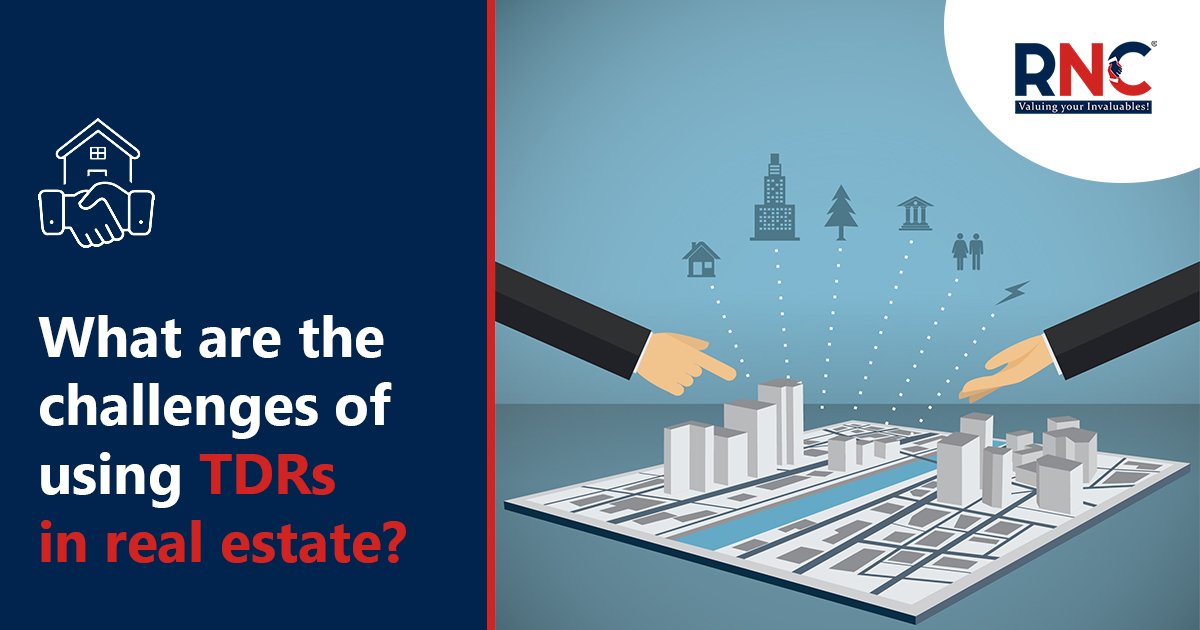
TDRs (Transferable Development Rights) are widely used in Indian cities like Mumbai and Pune for redevelopment projects. While they can unlock growth and profits, TDRs also come with risks, delays, and hidden legal issues. This guide explains the major challenges, real-world case studies, due diligence steps, and expert insights for buyers, investors, and developers in 2025.
Transferable Development Rights (TDRs) can accelerate redevelopment and unlock FSI, but they also introduce valuation ambiguity, documentation gaps, and compliance risks. In 2025, lenders, buyers, and regulators are examining TDR-backed projects more closely—especially where IBC/NCLT processes, FSI calculations, and title chain are unclear.
TDRs have developed as an important tool in urban planning, providing a framework for combining development objectives with resource protection. TDR in real estate, like any intricate system, comes with its own set of challenges. This blog will explore some of the difficulties developers, municipalities, and stakeholders face when dealing with transferable development rights.
Complex Regulatory Frameworks:
The extensive regulatory frameworks that regulate their application are one of the key hurdles in using TDRs in real estate. TDR standards and regulations differ greatly from country to jurisdiction, making it challenging for developers to traverse seamlessly. Zoning laws, density limits, and other legal issues can create a maze of complications that necessitate substantial knowledge to maintain compliance. For developers wanting to include TDRs in their projects, the lack of set criteria can lead to uncertainty, delays, and additional expenses.
Read More: Strategic Insights: Valuing Assets in Complicated Deals
Key Challenges
1) Valuation Ambiguity
-
Rates vary by origin ward/zone, issuance year, and policy changes.
-
Mispricing happens when applying generic PSF/FSI rates without adjusting for transfer costs, premium, fungibility, and time value.
2) Regulatory/Policy Variability
-
City-specific DCR/DCPR rules alter loading, fungibility, amenity reservations, and utilization caps.
-
Frequent circulars create interpretation risk.
3) Documentation & Title Chain Gaps
-
Missing original TDR certificates, partial utilization endorsements, or unrecorded encumbrances derail deals.
-
Stamp duty/registration irregularities can void claims.
4) Financing & Lender Comfort
-
Banks may discount TDR value due to saleability risk and policy reversals; higher equity often required.
5) Misuse/Over‑utilization Risk
-
Wrong FSI calculations, double counting, or use beyond permissible receiving zones → regulatory action, demolition risk, or penalties.
6) Execution Risk in Redevelopment
-
Slippage in rehab timelines, litigation with societies/tenants, or cost inflation can erode project IRR despite TDR availability.
Valuation and Market Dynamics:
Estimating the worth of Transferable Development Rights can be difficult. Factors including location, development potential, and market demand, among others, all have an impact on valuation. Inconsistent TDR valuation procedures can lead to disagreements between developers and sellers, thereby impeding the smooth implementation of real estate projects. Furthermore, market factors, such as variations in demand and supply for TDRs, can introduce uncertainty, making it difficult for stakeholders to make informed decisions about when and how to buy and sell these rights.
Community Acceptance and Engagement:
The successful implementation of TDRs frequently depends on community acceptance and engagement. Local inhabitants may object to the transfer of development rights in some situations, fearing changes to the character of their areas. Building trust and understanding requires effective communication and community outreach. Involving the community in decision-making can lead to opposition, legal challenges, and project delays. The ability to strike a balance between development ambitions and community concerns is critical for the efficient use of TDRs in real estate.
Administrative and monitoring challenges:
TDR program implementation and management necessitate efficient administrative systems and monitoring procedures. Municipalities must invest in the infrastructure required to track and enforce TDR transactions, ensuring regulatory compliance. The absence of strong administrative structures might lead to TDR misuse or abuse, jeopardizing the overall system’s integrity. Furthermore, the administrative overhead may stymie TDR program implementation, as municipalities may struggle to devote resources for effective monitoring.
Conclusion:
While Transferable Development Rights offer a valuable tool for achieving urban development goals while preserving essential resources, their implementation in real estate is not without challenges. Navigating complex regulatory frameworks, addressing valuation uncertainties, fostering community acceptance, and establishing effective administrative systems are essential steps in overcoming these hurdles. By acknowledging and proactively addressing these challenges, stakeholders can maximize the benefits of TDRs in Real estate creating sustainable and well-balanced urban environments.
Read trending articles:
Valuation of Investment: Why it is Important for Investors
Future of Investment Banking: Eye-Opening Trends and Challenges to Consider
Looking to price TDRs accurately or de‑risk a redevelopment model?
RNC Valuecon LLP provides independent TDR valuation, documentation review, and IBC‑ready reports.
Request a consultation
FAQs:
1. Is TDR safe for homebuyers?
Not always. If the developer hasn’t secured clear approvals, buyers risk delays in possession and litigation.
2. Who benefits from TDR in real estate?
Primarily developers in dense metro cities (Mumbai, Pune) who want extra FSI for construction. Indirectly, landowners and investors can also benefit.
3. What are the risks of investing in TDRs?
Ownership disputes, regulatory delays, and fluctuating TDR prices are major risks.
4. Can TDRs be transferred across cities?
No, TDRs are generally limited to the issuing municipal jurisdiction.

About the author:
Sahil Narula
Sahil Narula is the Managing Partner at RNC Valuecon LLP and a Registered Valuer with IBBI. He brings over a decade of experience in Valuation Services, Corporate Finance, and Advisory, having led numerous complex assignments under the Insolvency & Bankruptcy Code, 2016, Mergers & Acquisitions, Insurance, and Financial Reporting.
He is a regular speaker at national forums (ASSOCHAM, CII, ICAI, IBBI, Legal Era) and currently serves as Co-Chairman of ASSOCHAM’s National Council on Insolvency & Valuations and a member of CII’s Task Force on Insolvency & Bankruptcy.
🤝Connect with Sahil on LinkedIn.
